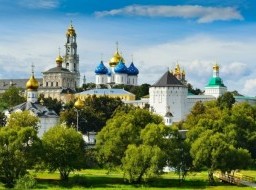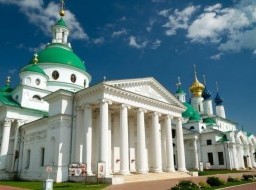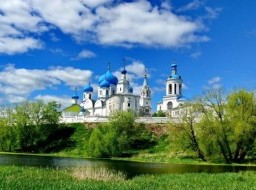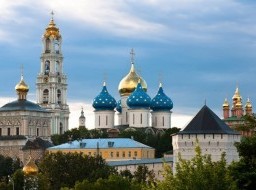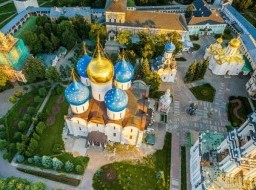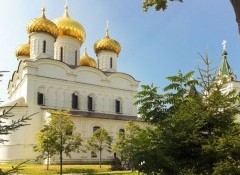Spaso-Preobrazhensky Monastery
Yaroslavl starts from the Spassky monastery (Saviour monastery), that was founded in the 12th century at the place where Kotorosl river meets Volga river. The main entrance to the monastery were the Saint gates (Svyatye vorota), that were built in 1516, but were changed since then (the decorations and the small church on top were added in 1621). Spaso-Preobrazhensky monastery dates back to the 13th century. It was destroyed by fire in 1501, and the monastery as you see it today was mostly built in the 16th century. For centuries it was one of the biggest monasteries in Russia and by 1764 it owned vast amounts of land and had some 14,000 serfs. Almost every Tsar in history visited the monastery and it was behind its formidable walls that Minin and Pozharsky prepared their citizen’s army before sailing down the Volga to help defeat the Poles. At the centre of the monastery is the large fresco covered cathedral and a bell tower which you can climb up to get great views over the river. The various buildings and towers of the monastery host a series of exhibitions about the region and there are also various souvenir stalls and tea stands dotted around. The most interesting museums are the Treasures of Yaroslavl with its wealth of gold, silver and previous jewels and the collection of ancient Russian art and icons. There’s also a museum of local history which deals with the history of Yaroslavl from the 13th Century and features numerous portraits and sketches, artifacts from local archaeological digs and most impressively a large 18th Century French carriage. A museum of local nature presents the flora and fauna found around the Volga and may entertain more specific interests, while the museum of Russian epic literature is even more niche. |
|
